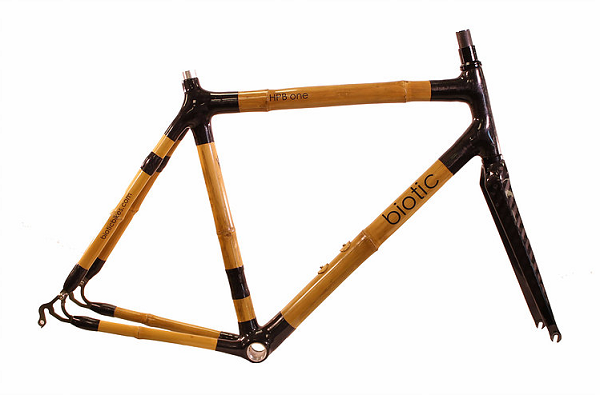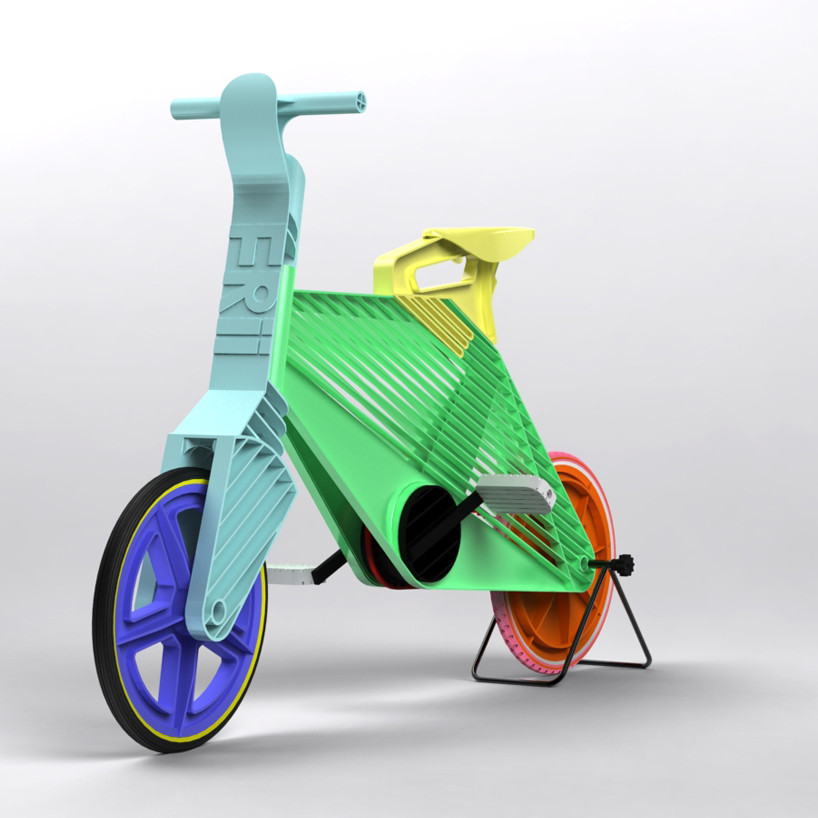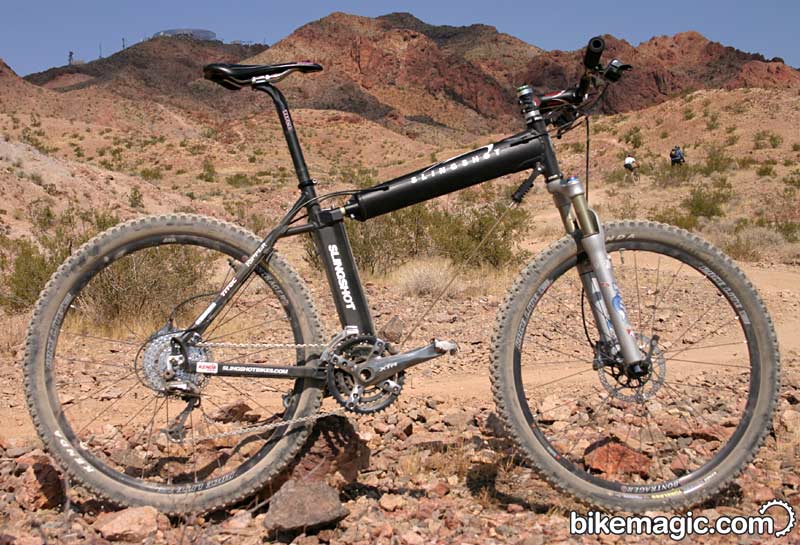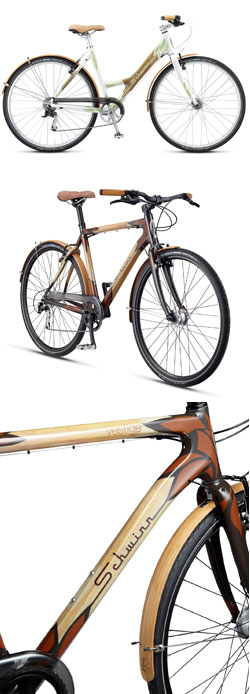Aluminum Alloy
History
The first Aluminum bicycles were made around the turn of the century. That is: the 19th century. The earliest documentation of Aluminum being used as a bike frame material is three examples made for a Parisian trade show by Clement Cycles in 1893. This bicycle was not made of tubes, but was a solid single piece aluminum casting!

This of course was quite impressive for its time as Aluminum was only first industrially produced in 1856. However, as you can imagine, these solid frames were very heavy and not very good.
Aluminum as a frame material remains a curiosity for the next 80 years while steel frames dominate the performance and utilitarian market. This doesn't change until TIG welding is developed and becomes common in the 70's. This advancement allows construction from extruded hollow tubes and the possibility of much better performance.
In 1974, the MIT mechanical engineering student Marc Rosenbaum decides to try building an aluminum bicycle for his senior thesis. He took advantage of the low density of Aluminum and built his bike with large diameter tubes and very thin walls. The result of his efforts was a track bike lighter than any other in the world at 12.3 lb!
Here's a great article on it. https://www.sheldonbrown.com/AluminumBikeProject.html

The industry followed soon after. Gary Klein patented the wide tube Aluminum bike frame in 1977 and started Klein bicycle company. Cannondale introduced the first model of the CAAD in 1983 and Al joined the pro peloton shortly after. Miguel Indurain won the first TdF on an Aluminum Pinarello Keral Lite in 1995 and they were the material of choice until replaced by carbon in 1999.

Today, Aluminum bike frames are the majority of new production, having displaced steel as the lowest cost option. You can buy Aluminum framed bikes from every department store. Aluminum also lives on at the highest levels in the pro peloton, with Jonny Brown's Specialized Allez winning the 2018 US Road Championships.

Material Properties
Most structural metals have similar maximum strength to weight ratios. This is due to the physics of metallic bonds. Aluminum alloys follow the same curve as steels and Titanium alloys, but have lower density and strength per unit volume. This has some implications:
Aluminum is not very good for high strength applications where size is limiting. Aluminum will never be very good for screws, bolts, or rivets because it will be a fraction the strength of steel.
However, for bike tubes, the case is opposite. Tubes with large diameter and thin walls are lighter for the same stiffness. This is because the stiffness (moment of inertia) of a tube under torsion scales with the cube of radius, maintaining the same total material. However, sufficiently thin tubes are vulnerable to local shell buckling. This effect limits the thinness that steel tubing can be made. Because Aluminum is much less dense, the same mass of it can be made into a tube that is both larger in diameter and wall thickness, and therefore stiffer. Alternatively, an equally stiff frame can be made lighter than steel. Most aluminum frames today have much wider tubes than steel bikes, but these tubes are actually less wide than the theoretical optimum. Some compromise is made for the sake of resisting handling loads and to improve aerodynamics.

Aluminum is self-passivating in air, meaning the oxidized metal protects the underlying metal from corrosion. This means Aluminum does not rust in fresh water or air. However, aluminum is vulnerable to pitting corrosion by solutions that attack the passivating film, including salt water. This is a problem for marine environments and during winters where roads are salted, and you should cover any exposed aluminum.
Aluminum alloys melt at about 600C, and they are relatively easy to cast. However, high strength applications prefer forged aluminum because this can align the grains in a favorable direction. Aluminum is also much easier to machine than steel or titanium and it does not significantly harden with heat. Many high quality modern aluminum frames are made by hydroforming, in which very high pressure water forces the aluminum tubes into a female mold. This process allows for considerable design freedom, and Aluminum tubes can be made more freeform than steel, though to a lesser extent than carbon.
Aluminum alloys are often said to not have a fatigue limit. This means that at sufficiently high cycle counts, any load will eventually cause failure. Therefore, aluminum frames can be seen to possess a finite useful life. This is in contrast to materials such as steel which have a (practically) unbounded cycle limit at loads below the fatigue limit. This is not entirely true, and Aluminum alloys have specified fatigue strengths at the highest ranges of cycle count. However, Aluminum's fatigue strength is less well defined than for steel as its fatigue diagram does not inflect sharply at any point. In my experience, well designed Aluminum frames will last longer than most people keep them running. My daily driver is twenty years old. Most people (though maybe not the reader) don't own a bike that long.
6061T6 is the most common grade of Aluminum Alloy used in cycling. It is widely available, moderately strong and it's easy to weld by TIG. 7075 is about twice as strong, but cannot be welded and is susceptible to micro-cracking. Many bike manufacturers have their own trade names for the alloys they use, and these may or may not be the same as above. Many exotic alloys exist with elements such as Magnesium and Scandium.
Al 6061T6
- Density: 2700 kg/m^3
- Yield Strength: 276 MPa
- Ultimate Strength: 310 MPa
- Young's Modulus: 69 GPa
- Elongation at Yield: 0.4%
- Elongation at Break: 12%
- Fatigue Limit: 97 MPa
- Brinell Hardness:95
Al 7075T6
- Density: 2810 kg/m^3
- Yield Strength: 503 MPa
- Ultimate Strength: 572 MPa
- Young's Modulus: 72 GPa
- Elongation at Yield: 0.7%
- Elongation at Break: 11%
- Fatigue Limit: 159 MPa
- Brinell Hardness: 150
Just for comparison:
4130 Chromoly
- Density: 7850 kg/m^3
- Yield Strength: 435 MPa
- Ultimate Strength: 670 MPa
- Young's Modulus: 205 GPa
- Elongation at Yield: 0.2%
- Elongation at Break: 25.5%
- Fatigue Limit: 320 MPa
- Brinell Hardness: 195
Ti6Al4V
- Density: 4430 kg/m^3
- Yield Strength: 880 MPa
- Ultimate Strength: 950 MPa
- Young's Modulus: 114 GPa
- Elongation at Yield: 0.8%
- Elongation at Break: 14%
- Fatigue Limit: 510 MPa
- Brinell Hardness: 334
Toray T700S Carbon Fiber (UD)
- Density: 1800 kg/m^3
- Ultimate Strength: 2550 MPa
- Young's Modulus: 230 GPa
- Elongation at Break: 1.7%



























